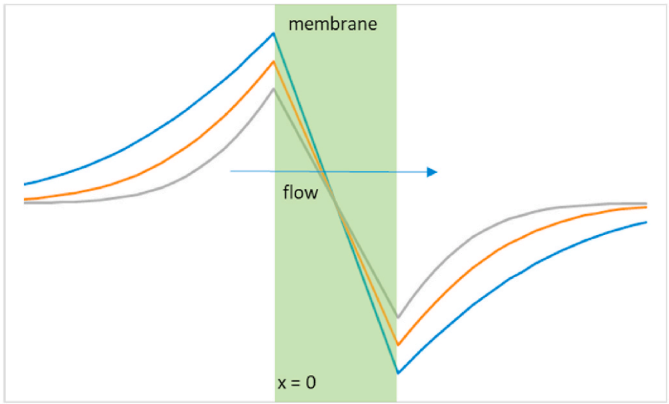Time-resolved pressure-induced electric potential in nanoporous membranes: Measurement and mechanistic interpretation.
Performance of charged nanoporous membranes in ion separations and electrokinetic energy conversion is controlled by their surface-charge density. This (or related such as zeta-potential) parameter has often been obtained from measurements of pressure-induced electric potential typically referred to as streaming potential.
However, with nanoporous membranes in dilute electrolyte solutions, determination of genuine streaming potential is non-trivial and requires time-resolved measurements. A new approach to the interpretation of such measurements developed and tested experimentally in this study makes possible parallel determination of several membrane transport properties while previously only streaming-potential coefficient was determined.
In nano-porous membranes, this coefficient is a non-monotone function of surface-charge density, which makes difficult unambiguous determination of the latter. On the contrary, the other properties determined in this study are monotone functions of surface-charge density. This approach has been validated via characterization of two nanoporous track-etched membranes (with the pore sizes of 25 nm and 35 nm) in KCl solutions and revealed an excellent applicability.
The transport properties “extracted” from experimental data were used as input of full (numerical) version of space-charge model. This made possible determination of surface-charge density as well as some properties of hypothetical gel layers reportedly surrounding pores of nanoporous grades of track-etched membranes.
Explore Further
Full Article:
Supporting Documents:
- Streaming potential with ideally-polarizable electron-conducting substrates
- Osmotic pressure and diffusion of ions in charged nanopores
